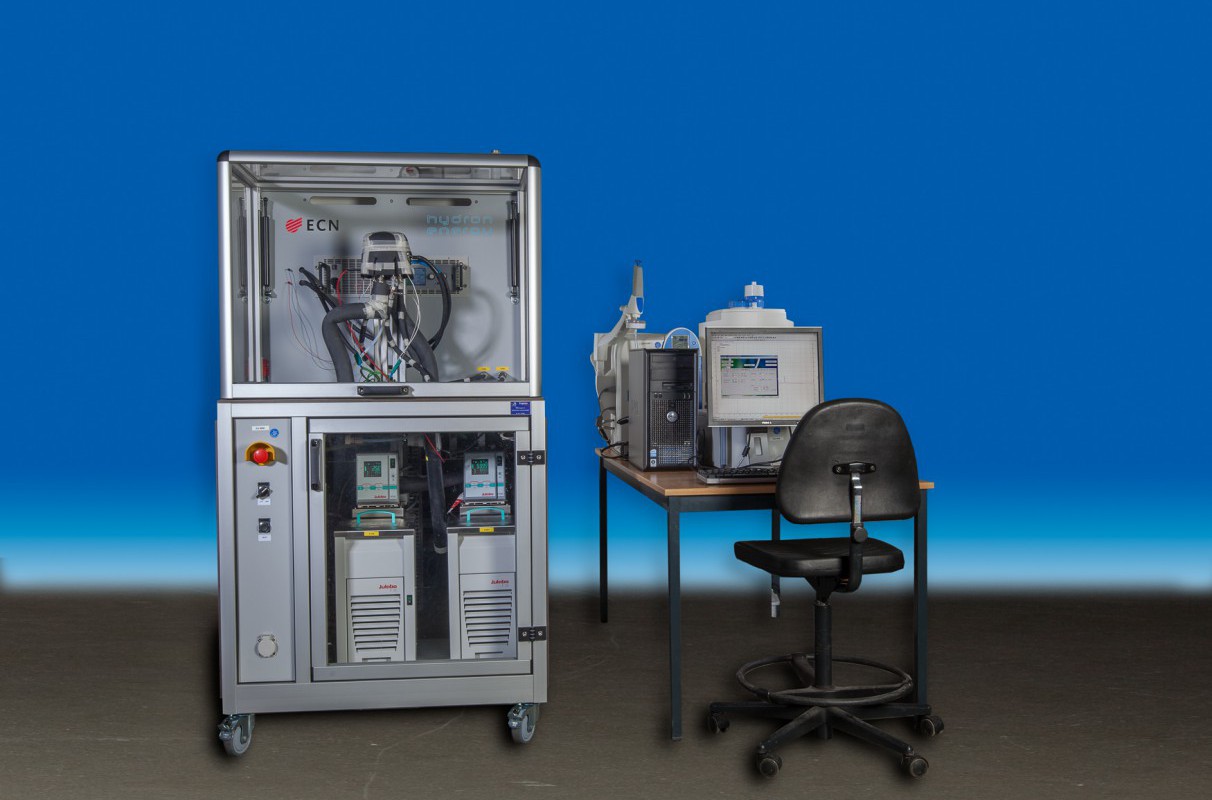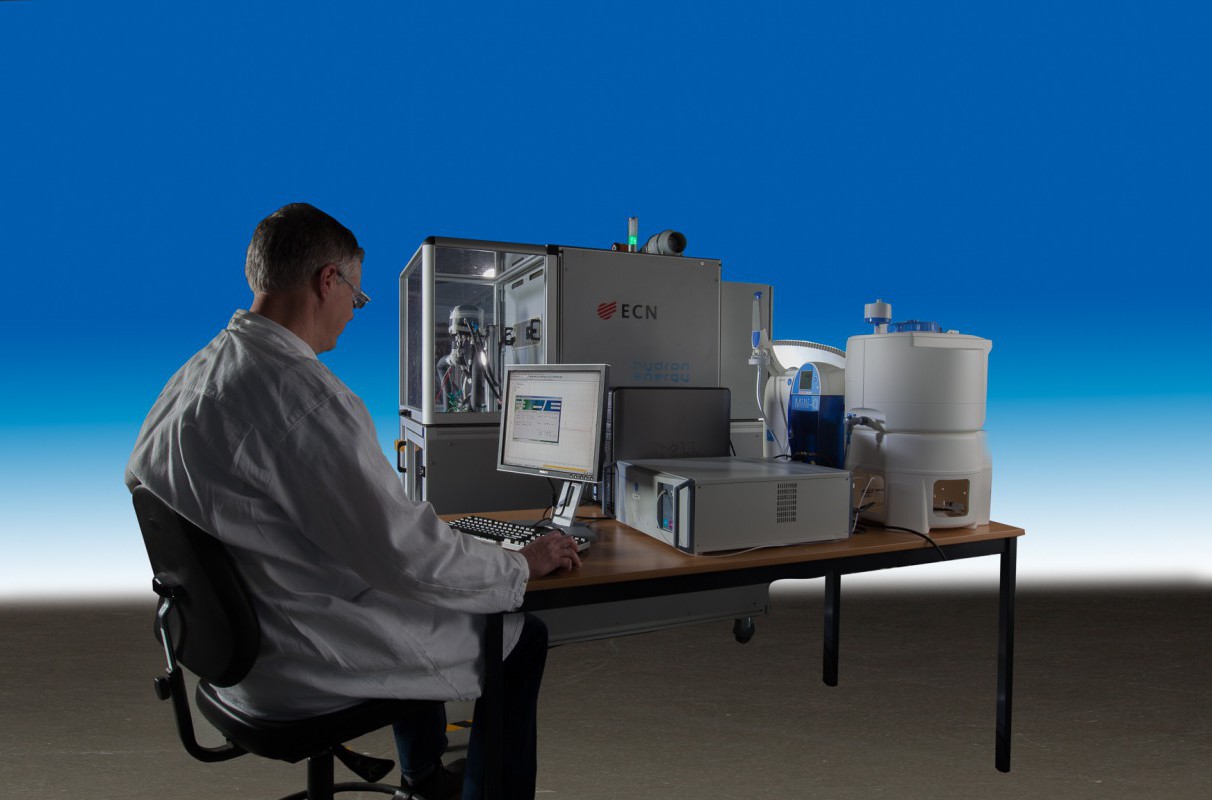

VoltaChem is looking for high-tech component suppliers for superior electrolysers
08-03-2017
 Shared Innovation Program VoltaChem is looking for companies that have technologies in house which can improve the lifetime of electrolyser components. With an electrolyser, it is possible to make hydrogen out of water through the use of electricity. The demand for hydrogen is expected to increase strongly in the coming years, not only from the transportation sector, but also from the chemical industry. Thus, there is a need to work together on developing an electrolyser which is competitive in the market. VoltaChem’s Power-2-Hydrogen experts, Arend de Groot explains which concrete opportunities exist for the Dutch high-tech manufacturing industry.
Shared Innovation Program VoltaChem is looking for companies that have technologies in house which can improve the lifetime of electrolyser components. With an electrolyser, it is possible to make hydrogen out of water through the use of electricity. The demand for hydrogen is expected to increase strongly in the coming years, not only from the transportation sector, but also from the chemical industry. Thus, there is a need to work together on developing an electrolyser which is competitive in the market. VoltaChem’s Power-2-Hydrogen experts, Arend de Groot explains which concrete opportunities exist for the Dutch high-tech manufacturing industry.
Validation of high-tech components for competitive electrolysers
“Shared Innovation Program VoltaChem is an initiative founded by TNO and ECN which, together with partners, works on the electrification of the chemical industry,” explains Arend de Groot, who is responsible for the Power-2-Hydrogen program line within VoltaChem.
“At VoltaChem partner ECN, we recently set up a unique electrolyser test station that can perform lifetime tests. The lifetime determines how successful an electrolyser is. At this time, expensive catalyst materials, such as iridium, or coatings of precious metals, to prevent corrosion, allow for long lifetimes. With extended duration tests and tests where the degradation is specifically accelerated, we now want to conduct research into which components are suitable to reduce the costs and increase the efficiency of the electrolyser, while ensuring that the lifetime remains the same or even increases. We can’t do this alone and so we are searching for companies that have the technologies in house which can produce better electrolyser components. We can help companies develop components, with their own technologies as a basis, and together test the components.”
 Electrolyzer test station in Petten
Electrolyzer test station in Petten
Why complete tests together with VoltaChem?
Why should high-tech component suppliers not directly test their materials with their (potential) clients: the electrolyser manufacturer? “That has to do with two factors,” explains Arend de Groot from VoltaChem. “First of all, the manufacturers know that the lifetime is the most important. Thus, they are only interested in components where the lifetime has already been demonstrated. Secondly, the design of the cell where the components need to fit into is often specific to the manufacturer. In that case, if you want to test a material that needs to be applicable in various types of electrolysers and want a consistent basis for comparing the results, then you would need to perform the testing through an independent platform which works according to the principle of open innovation. That is exactly what VoltaChem offers. A major advantage is that the component suppliers can use successful, standardized tests to have a good story when they approach their potential clients, the electrolyser manufacturers. This is thus a win-win situation for all those involved,” Arend de Groot says enthusiastically.
Positioning of the Dutch manufacturing industry as a future provider
Arend de Groot sees clear opportunities for the Dutch manufacturing industry to supply the high-tech components to the up and coming electrolyser industry: “Electrolyser manufacturers (such as Siemens, Hydrogenics, and ITM in Europe) put their efforts especially into the integration of the electrolyser stack in a complete system. Cell and stack developments are, for a significant part, carried out by the providers of key components, such as membranes, catalysts, and separator plates. In the end, the added value of the electrolyser sits predominantly in the functional elements which are supplied with it. For this reason, it is interesting for the Netherlands, with a strong high-tech manufacturing industry, to position itself as a future provider.
Examples of the concrete innovations that VoltaChem is looking for
VoltaChem has a clear vision of which innovations are needed. A few concrete examples are:
- Replacement of the titanium plates between the electrolyser cells with other corrosion-resistant materials or smart composite solutions.
- Solutions to reduce the transport of gases (oxygen/hydrogen) through the polymer membrane, for example through the application of other (proton conducting) polymers or use of thin layers.
- Redesign of the usual titanium ‘current collector’ layer, which must have good electrical conduction properties, but at the same time hinders the transport of gas and liquid as little as possible.
- Alternatives for the expensive ruthenium/iridium catalysts which are used to split water into protons and oxygen.
Opportunities for cooperation
VoltaChem is looking for companies that have technologies in house which can improve the lifetime of components in electrolysers. These solutions can only be realized in practice through working together. VoltaChem has the knowledge of the challenges in the electrolyser. You may have the solution. Arend de Groot would like to hear from you at +31 (0)88 515 82 40 or a.degroot@ecn.nl.
Also take a look at the ELECTRE project that aims to drive down electrolyser cost by improving durability
Please take a look at all our calls for participation.


Share this page: